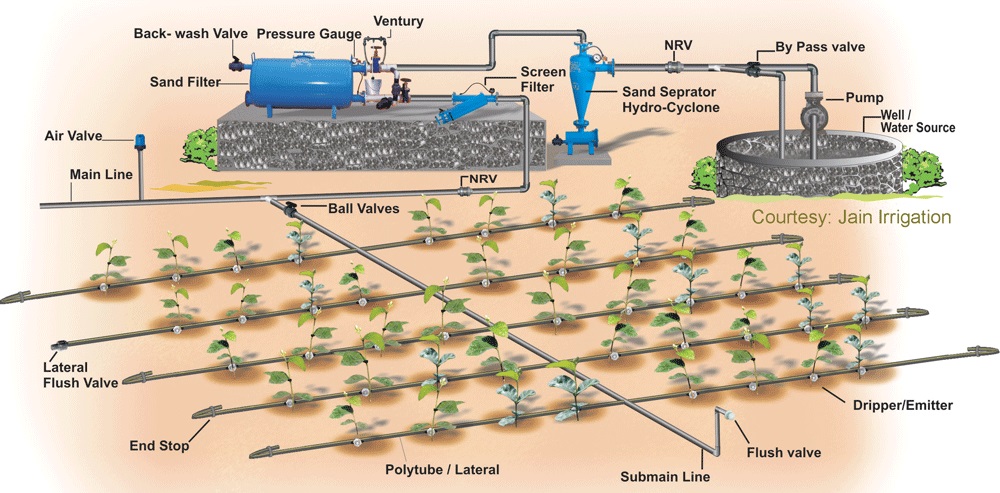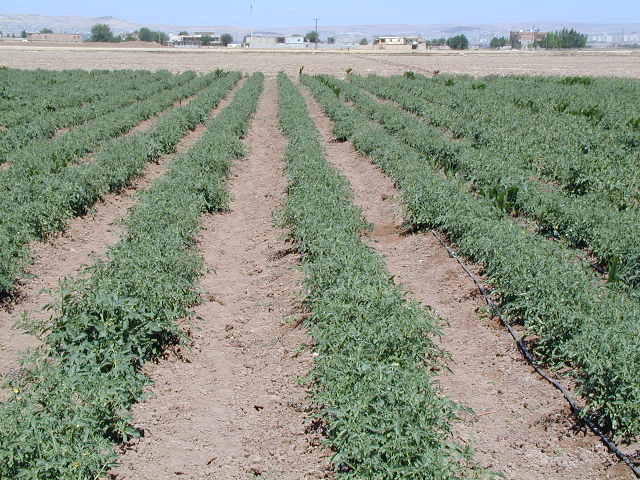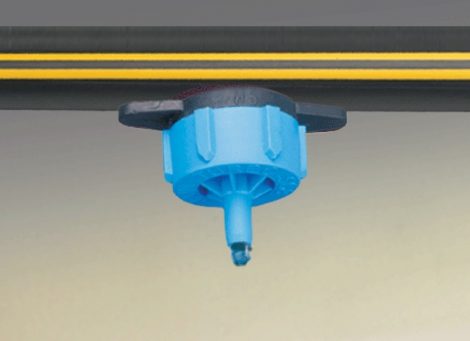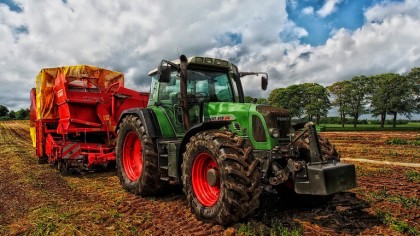Does It Pay To Have A $600 Recliner Repaired?
Over recent years, there have been considerable technological advancements in irrigation. Ane of the more effective of which is drip irrigation. Irrigation technologies, put simply, provide water to plants, and methods for doing so can vary widely. Techniques for irrigation can range from surface irrigation techniques, either through channels or completely flooding the field, to the more precise and controlled method of drip irrigation. Other examples include overhead irrigation which, consequently, creates a lot of runoff.
For anyone who has played the Civilization series of games, or has an involvement in the development of civilizations, you'll quickly appreciate that irrigation was a very early technological advancement of our species. It allowed for the development of more efficient farming and subsequently provided stable, more than or less, food supplies. Drip irrigation is, in effect, a modernistic "tweak" of the time old technique.
In the post-obit article, we'll apace gloss over what drip irrigation is and the components of a typical system. Let'south get stuck in then.

Example of a commercial setup [Image Source: Wikimedia Commons]
What is baste irrigation?
Drip irrigation is renowned for being a very efficient method of watering plants. Past style of example, the boilerplate sprinkler system has an efficiency of around 75-85%. Drip irrigation, in dissimilarity, has efficiencies in excess of 90%. Over time this divergence in water delivery efficiency will make a considerable divergence in crop production and the company's bottom line. In areas where water is short supply, such equally the desert regions of the US, drip irrigation has, unsurprisingly, become the preferred method of irrigation. Drip irrigation systems are relatively inexpensive and like shooting fish in a barrel to install, uncomplicated to design, and help maximize establish health due to the reduced moisture levels on fields.
This form of irrigation, sometimes called trickle irrigation, applies h2o directly and slowly to the soil. The technique'southward efficiency is provided past two major factors. The first is that water is captivated by the soil for access to the plant roots rather than running off or evaporating. Secondly, the water is only supplied to those areas of the field that actually demand the water, i.eastward. the plant roots. Most baste irrigation systems are unproblematic to blueprint which minimizes design errors and installation flaws. There are some bang-up guidelines out there if yous are interested in perhaps installing ane.
Why irrigation is important
Irrigation is one of the oldest technologies mankind developed. Information technology is used extensively beyond the world. Countries with the largest populations (Us, Prc, India etc.) take over 100,000 km2 of irrigated state! Wow!
Irrigation consumes a lot of fresh water and can result in water logging of crops and build up of salts. Salinization is a big problem in places like Egypt. The riverbed of the Nile has been irrigated from shut to 5000 years since around 3100 BCE. These practices draw salt from lower horizons in the soil to upper levels. This is so bad in some places that the soil is actually whitish in areas! This isn't an issue isolated to Arab republic of egypt and occurs wherever irrigation has been employed for a long menstruation of time.
Drip irrigation offers a dandy solution to this potential problem. Historic practices such equally heart-pivot irrigation are not sustainable in the long term. They swallow large amounts of water and are potentially damaging to the "health" of the soil. Drip irrigation allows the user to better control the corporeality of water plants receive, rather than blanket watering the area. Eutrophication is massively decreased by drip irrigation equally fertilizers are not carried away by h2o runoff into watercourses.
Baste irrigation might be the hereafter
Italian republic is one of the globe's largest agrestal countries and has a large percentage of land given over to growing wheat, corn, rice and fruits etc. Italy began implementing drip irrigation in 2011. Italy's adoption of drip irrigation is estimated to save the land four.iii billion Euros over the next thirty years! Co-ordinate to the World Water Development Report (WWDR), 47% of the world'south population are likely going to live in "areas of high water stress" past 2030! If this warning is to be believed, it is essential that we develop and implement ways to better use and conserve water supplies. Drip irrigation might just be the perfect solution for farming.
How does information technology work?
In result, drip irrigation places small baste emitters in close proximity to the crops' root systems. This provides a much-improved efficiency and makes the system much more controllable compared to other methods. The emitters release h2o in a slow and steady manner. The emitters are very minor, about the size of a US quarter and are arranged in an assortment in the basis. These emitters are directly connected to the h2o source by feeder hoses. Another setup is to accept the emitters congenital into the feeder hose instead of rows of independent emitters. This is called a trickle hose.
Who invented it?
The invention of drip irrigation is ofttimes attributed to one Simcha Blass. Simcha was an Israeli engineer and inventor who lived between 1897 and 1982. Simcha was an important effigy in water evolution in State of israel and he, with his son, initiated, introduced and developed drip irrigation systems.
Drip irrigation was tested in a primitive form in the 1920'southward just the modern applied science as we know it was properly developed by Simcha in the 1930's in Israel. Its discovery seems to take been something of an accident. Blass, whilst spending some time in the desert regions of Southern Israel noticed something strange. He noticed that 1 tree almost his location was performing much improve than all other vegetation nearby.
When Blass went for a closer await, he noticed that a water pipe virtually the tree had a pocket-sized leak supplying its root arrangement with its very own regular ho-hum supply. This adventitious discovery led Blass to commence on a journey of trial and error testing various materials and water pressures for an platonic solution. It wasn't until the 1950's with modern plastics that Blass could have his engineering science to the next level. In the 1960'due south Blass was able to finalize the technology and patent the design.
"Gubbins" of a baste irrigation arrangement
Baste irrigation systems are pretty simple setups just do consist of several elective parts. A typical simple arrangement will consist of the post-obit components.

Simplified drip irrigation system [Prototype Source: IrrigationTutorials]
Valves
The role of valves in the baste irrigation organisation is very simple. They turn the water flow on or off. Valves come up in diverse "flavors". Isolation valves are manually operated for systems that require an infrequent shut-off of the water. These valves are typically sited close to the water supply to enable isolating the organisation for repairs or off flavor. These can be installed anywhere in the organization to enable isolation of segments of the system for localized repairs but this is usually but employed in larger systems.
Control valves are valves that plow the water on and off to individual "circuits" or areas of the yard that are perhaps irrigated separately from one another. These can be automatic (using solenoids) or manually operated. Depending on the system pattern at that place tin can be only one or many installed. For instance, you may accept one control valve that controls water supply to the emitters in a vegetable garden. Yet another may exist nowadays that controls h2o supply to shrubs or hanging pots around the house and patio.

Drip irrigation arrangement [Prototype Source: Wikimedia Commons]
Backflow preventer
This is a piece of kit employed within the system to prevent, hence the proper name, clay, leaner, other contaminants from existence sucked dorsum up into the drinking h2o supply for the drip system. This device is essential for all drip irrigation systems.
Backflow preventers are essential considering drip emitters rest direct on the soil and are potential very susceptible to water contamination from soil born diseases etc.
Pressure level regulators and pressure reducing valves
These devices, as the proper name implies, reduce the pressure of h2o flowing through the system and keep it at a constant level. Pressure reducing valves and pressure regulators are in this instance synonyms and essentially the same thing.
Drip irrigation systems, on the whole, perform best at lower water pressures than typical water supply systems. These devices also enable a constant system pressure even if the supply pressure fluctuates periodically, which is nice. Designers need to be conscious of areas with low water pressure as these devices will clearly further reduce the system pressure.
Usually, 2 types of pressure regulators are employed in drip irrigation systems. Non-adaptable ones with pre-set up outlet pressures and user adaptable types. In general, pocket-size homeowner arrangement will use non-adjustable valves if they have less than 3 control valves. You lot tin, of course, install adaptable valves if you lot want full command of your arrangement. Non-adaptable regulators must be installed afterwards the control valve and in cases where multiple control valves are nowadays, pressure regulators are needed for each 1. Accidental installation before the control valves can cause pressure surges that will damage the arrangement.
Adjustable pressure regulators, on the other hand, can be installed before or after the control valves. In big systems, you tin install a unmarried or fewer adjustable pressure regulators in the main supply line earlier control valves to salvage on costs.
Filters
The filter is obviously used to, well, filter the water. Drip emitters have very small openings which are hands clogged up so employing filters earlier in the system is essential for increasing the life span of the irrigation system. Recommendations for filters are that they are between 150 and 200 mesh. High-quality filters are often installed before the valves or pressure level regulator but lower quality ones can be installed after the pressure regulator. Loftier-quality filters usually have a maximum pressure level rating of 10.3 bars (150PSI).
Emitters
Now nosotros come to the "guts" of the drip irrigation system. The emitters are responsible for directly controlling the rate of water supply to the soil. Emitters are unremarkably small plastic devices that either screw or snap onto the drip tube or pipe. In trickle pipage systems they are pre-assembled and part of the pipe associates. Common emitters, emit, water at around 4 liters per 60 minutes.
Every bit a full general dominion of thumb 1 or two emitters are usually required per institute. This does, of course, depend entirely on the size of the institute in question. Trees or shrubs will conspicuously need more than a small plant. Use of multiple emitters also provides the organization with backups in example of a blockage in one or more of the emitters. The more emitters present the wider the expanse of irrigation and hence the increased growth of roots for healthier crops and plants. Of course, if plants tend to exist planted close together the system may only demand 1 per plant depending on the system blueprint and "coverage" of the emitters.
Emitters are usually installed at to the lowest degree 450 mm apart. As a rule, some sources advise installing emitters 600 mm apart under eighty% of the plant's leaf canopy, this is where the roots are later on all. For highly permeable soils emitters should exist placed 300 to 450 mm apart. Emitters should never be buried unless they are specifically designed for this purpose.

[Image Source: Wikimedia Commons]
Mainline and lateral/sub-main pipes
This pipe is the master connection between the water supply to the control valves of the drip irrigation system. It tin can be made of galvanized steel, copper, PVC or heavy wall Polyethylene. Each blazon has the inherent limitations and strengths. PVC, for example, is hands damaged by sunlight and is ordinarily cached or protected. Polyethylene has a low burst pressure and is usually only used where water pressures are lower than l PSI.
Lateral/sub-principal pipes are located between the control valve and baste emitter assemblies. These tin can again be made of PVC, PEX or Polyethylene. As these are generally placed downstream of the force per unit area regulator high-pressure ratings are not essential.
Baste tube or hose
This is a special type of tube common in near drip systems. They tend to be laid on the ground surface between plants. Emitters are generally installed to these tubes. Drip tubes tend to be fabricated of thin-walled polyethylene and consequently have a much lower pressure rating than other parts of the organisation. It is more often than not recommended that these stay above basis equally they tin commonly be nibbled on by pesky local rodents! In big commercial setups, these tubes are usually "hard-piped" in these systems and the emitters are installed straight onto the laterals.
Drip tube tends to not exceed sixty meters in length from the betoken where water enters the tube. Tubes tin be extended then long as the point of entry of the h2o supply never exceeds sixty meters from entry to piping termination betoken. e.g. a 120-meter tube where the water entry signal is at the center point.
Air vent
Air vents are installed in systems that are turned off at any fourth dimension. They prevent air from existence sucked up into the emitters. As the water force per unit area falls away, air can be sucked back through the emitters and entrain clay or soil into them. Conspicuously not desirable. The presence of an air vent mitigates this problem by cartoon in air through it rather than the more delicate emitter openings.
End cap or affluent valve
Unless you desire water to run out of the end of the baste tube you'll need to install an end cap! All well and expert but this exercise innovate some other result for the drip irrigation arrangement. The h2o flow within the baste system is very slow which can allow sediment to build up, even permit algae to grow within the pipes. Unremarkably drip tubes are flushed virtually one time a year, more if an algae trouble is persistent.
Benefits of drip irrigation
Given the engineering'south setup, the greatest benefit this method provides to the producer is control. Given the corporeality of control it provides, the technique offers slap-up economic benefits likewise as reduced waste. A typical backyard sprinkler will use between four and twenty liters of water per minute. A standard baste irrigation organization, on the other mitt, measures water apply in liters per hour. This slower supply of water to the crops improves root take up and reduces water loss through basis percolation. This allows the water to be used more efficiently and reduce waste through evaporation for example. The direct application of water to the soil also prevents drift. Drift is the phenomena of water beingness blown or dispersed to other parts of the site where water is not required, east.g. walkways etc.
A well maintained and managed drip irrigation organisation can, all but eliminate, water waste through surface runoff. Drip irrigation systems rarely demand excavations and rarely disrupt the integrity of landscapes during installation. Tubing can be weaved throughout the site where irrigation is required. Drip irrigation systems can, therefore, also be moved and are not required, which is prissy.
The design of drip irrigation provides maximum crop yield and increased fertilizer use on crops. Its localized supply of water results in reduced weed growth and also restricts the population of potential hosts. Drip irrigation systems outcome in minimal, if any, soil erosion as there is no surface runoff. This also controls potential fertilizer pollution in natural groundwaters and surface waters. The use of emitters, control valves etc. allows the user to provide ready adjustment and sophisticated control of water supply to areas of the site. Seed germination is greatly improved and tillage operations are decreased.
Disadvantages of drip irrigation
There are many advantages for using drip irrigation over other irrigation methods and they are usually a great solution for commercial backdrop. Drip irrigation is not without its problems, as you'd wait. They do tend to require more than maintenance than a more conventional system.
As previously discussed the slow water flow charge per unit and depression pressure tin cause sediment to build upwards in pipes. Algae tin can fifty-fifty grow where climates allow. Mitigation of these issues requires regular flush outs of the organization. This is usually required at to the lowest degree annually but can be more frequent in the example of algal build up. Non-potable water contains more particles which tin can hands clog filters and baste emitters in particular. Drip emitter nozzles also require regular cleaning. These irrigation systems tin can also have an effect with salinity hazards.
Baste irrigation is best used for beds rather than say a lawn. Large open up spaces that do require regular watering are amend served with more conventional irrigation systems. For larger commercial applications, regular monitoring of constitute wellness should exist carried out to make sure the system is working at acme efficiency. Clogged or block emitters can cut off the h2o supply to "spots" in the field that will cause the gradual decline in health of the plants in the affected areas. This obviously adds an actress manpower cost to the facility. A well organized and managed monitoring arrangement will identify problems early, allowing for repairs to exist carried out in a timely manner.
Water distribution elements of the system can too be damaged by exposure to sunlight especially if fabricated of PVC. This tin cause ongoing maintenance and repair costs that may not be the case with culling irrigation systems.
The last word
So there you get. Baste irrigation has come up a long mode since the random observations of 1 engineer and inventor. With future water supplies potentially becoming stretched, the demand to improve water use wherever we tin can volition likely encounter drip irrigation becoming e'er more important to our agricultural needs. Baste irrigation is a relatively elementary engineering and offers a fantastic alternative to more than traditional, h2o "hungry" or should we say "thirsty", irrigation methods. It is seeing ever increasing popularity in more arid regions of the globe and you lot can even install a elementary one in your garden! It is of form not perfect but the benefits and reduced water consumption and environmental impacts of the tech more or less outweigh its limitations.
Sources:IrrigationTutorials, NKOLandscaping, AgriInfo, LearnTravelArt, MyOliveTree
Source: https://interestingengineering.com/how-exactly-does-drip-irrigation-work
Posted by: manoreigerstand.blogspot.com



0 Response to "Does It Pay To Have A $600 Recliner Repaired?"
Post a Comment